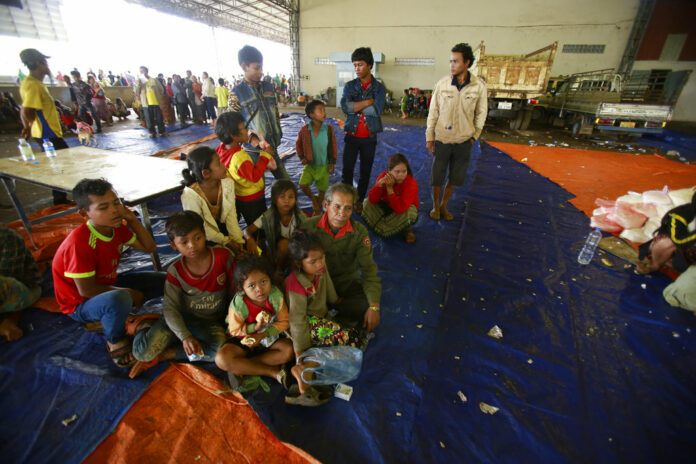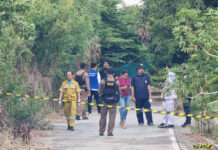
SANAMXAY, Laos — Authorities and the builder are investigating why a dam in southeastern Laos collapsed earlier this week, killing at least 24 people and leaving 131 missing.
Floodwaters that rose to rooftops were slowly receding Thursday as villages began digging out of the deluge of mud from the dam’s failure late Monday.
The state-run Vientiane Times reported the thousands stranded in the disaster were rescued by Wednesday. It cited Lao Prime Minister Thongloun Sisoulith as saying Wednesday that more than 3,000 people were left homeless when the auxiliary dam of a joint venture hydroelectric project with two South Korean companies gave way after days of torrential rains.
Hundreds traveled by boat, bus and pickup trucks to shelters in nearby towns. The Red Cross, South Korean government and other organizations rushed water purifiers, food and other aid to the area.
“The water came so quick we just left the house and ran away,” said Phon Vuongchonpu, whose family of 12 fled as the floodwater rose to roof level. “We’ve lost everything: motorbike, furniture, our cows and pigs.”
Bounyong Phommachak, a Red Cross official, said 24 bodies had been recovered.
Initially Laos’ state media reported that hundreds of people were missing and feared dead. The discrepancies could be due to difficult communications and heavy rains, which have hampered rescue efforts.
The exact circumstances of the dam’s collapse remain murky.
SK Engineering & Construction, one of the two South Korean partners in the hydroelectric project, said the dam began failing Sunday, while Korea Western Power, the other, said the earth-fill dam began visibly weakening on Friday.
SK Engineering sent its president and an emergency team to help with the rescue and repair effort.
“We will find out causes of the incident thoroughly and take necessary actions quickly,” it said in a statement earlier this week.
Monsoon rains clearly contributed to the disaster: A report by the intergovernmental Mekong River Commission said storms had caused water levels along the river to rise by 3-5 meters (9-15 feet) in the past week.
Continued heavy rain and strong winds forecast for the area could hinder recovery efforts, and risks from flooding persisted in the mountainous region.
But a flurry of dam building along the Mekong River and its tributaries, including those affected by this disaster, has raised concerns over environmental impact and other problems.
The USD$1.02 billion project encompassing several river basins in a remote corner of southeastern Laos is the first hydroelectric dam to be built by a South Korean company, and it was unclear how severe the damage would be to the overall plan. The dam was due to begin operating in 2019, with 90 percent of the power generated going to Thailand.
Laos has dozens of hydroelectric projects under construction and plans for sales of power to neighboring countries, now accounting for about a third of its exports, to grow substantially.
International Rivers, a non-governmental group generally critical of such projects, said the catastrophe showed the need to improve warning systems.
“With over 70 hydropower projects currently built, under construction and planned across Lao PDR – most of them owned and operated by private companies – authorities must immediately review how dams are being planned, designed and managed,” the group said in a statement.
Story: Hau Dinh

















































